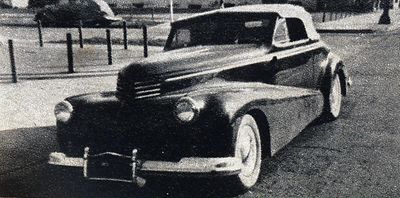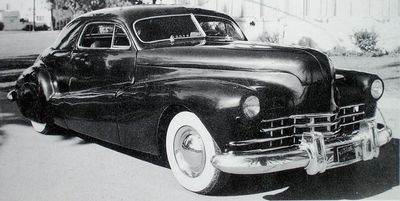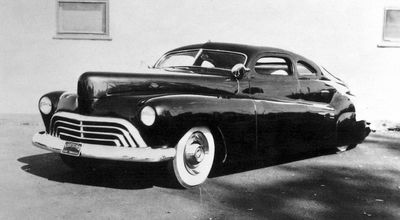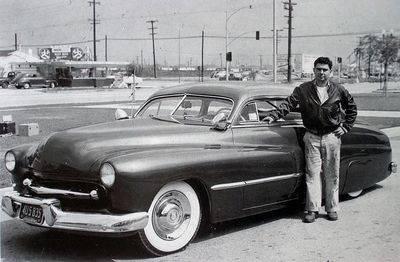Fadeaway Fenders



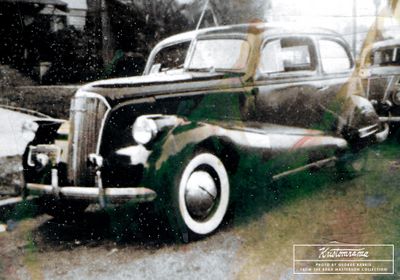





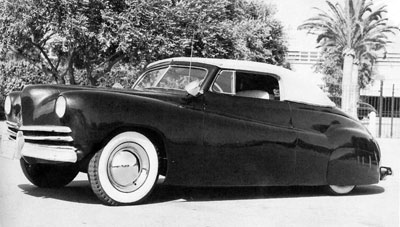
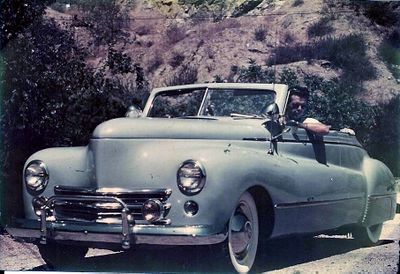
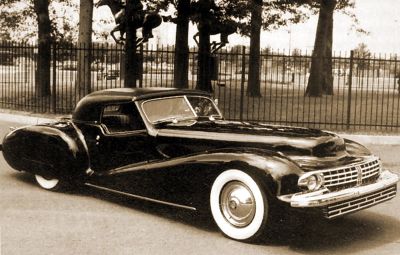


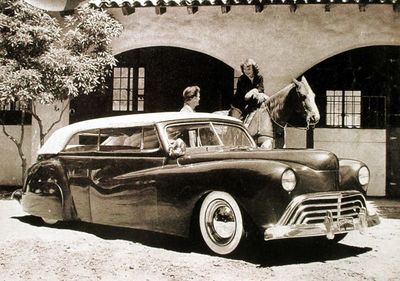



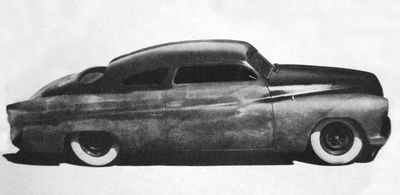
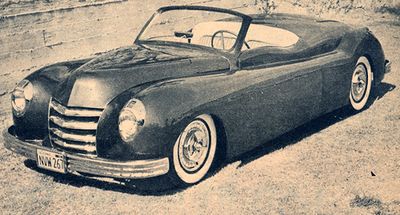
"Innovations in production model design sometimes are the result of custom car styling trends," this is how Dan Post described the origin of fadeaway fenders in his book Blue Book of Custom Restyling. Fadeaway fenders were a popular kustom treatment in the 1940s. George Barris meant that giving a car fadeaway fenders sat it apart and stamped it as a kustom. It gave the car a new look with a smooth, rounded bodyline. Both Sam and George Barris liked fadeaway fenders, and the fadeaway fender became one of their trademarks. The Ayalas were also into fadeaway fenders in the forties.
Contents
Marquis Hachisuka's 1937 Lincoln Zephyr by Bohman & Schwartz
As early as 1936 Bohman & Schwartz produced fadeaway fenders of the tack-on variety on Marquis Hachisuka's 1937 Lincoln Zephyr.[1]
Coachcraft Ltd.
Coachcraft Ltd. made several cars with fade-away fenders shaped from part of the door panel prior to 1941.[1]
Harry Westergard
In 1940 Northern California customizer Harry Westergard added fadeaway fenders to Butler Rugard's 1940 Mercury. Where Butler and Harry got the idea of fadeaway fenders from are unknown.
The 1941 Chrystler Newport
In 1941 the 1941 Chrysler Newport Concept Car was shown to the public. The Newport was fitted with fadeaway fenders.
The 1941 Packard Clipper
In 1941 the Packard Clipper pioneered fadeaway fenders on the assembly line.[1] In 1942 Buick introduced it on their Roadmaster and Super models.
Summers Fender Extension
In 1946 Jimmy Summers started offering fadeaway fender kits for 1942-1948 Chevrolets, Pontiacs and junior Buicks. Spencer Murray bought a set from Jimmy to put on his 1946 Chevrolet fastback, and he remembers that Jimmy had dies made to stamp the parts and a sheet metal shop to do the stamping.[2] In 1948, Jimmy ran ads for his "Summer Fender Extensions" in Hot Rod Magazine. At the time Jimmy had a shop at 7919 Melrose Avenue in Los Angeles. According to the ads he ran, the fender panels served to enhance the body lines and inexpensively repair damaged or rusted doors and bodies. Fender extensions for Chevrolets, 1942 through 1948, were made in two types. "Type A" fit Aero Sedans, and "Type B" fit Convertibles, Coupes and Tudor Sedans. A complete primered set came with brackets, nuts, bolts, patterns and instructions for installation. The list price was $69.50.[3]
Custom Cars Featuring Fadeaway Fenders
Bruce Brown's 1936 Ford
Marquis Hachisuka's 1937 Lincoln Zephyr
Richard Meade's 1938 Buick Convertible
Art Lehner's 1939 Ford
C. E. Johnson's 1939 Ford
Bob Creasman's 1940 Ford Coupe
Butler Rugard's 1940 Mercury
Gil Ayala's 1940 Mercury
Lawrence Garrison's 1940 Mercury Convertible
Albert Fitzpatrick's 1940 Packard Custom - The Fitzpatrick Special
George Barris' 1941 Buick
Var Martin's 1941 Buick
Al Lauer's 1941 Cadillac Convertible
Frank Monteleone's 1941 Ford
Jack Stewart's 1941 Ford
Joe Urritta's 1941 Ford
John Vara's 1941 Ford Convertible
Charles Kemp's 1941 Plymouth Convertible
Hank Griffith's 1942 Ford
Bill DeCarr's 1941 Mercury
Ben Mario's 1947 Buick
Butler Rugard's 1947 Chevrolet
Raymond Jones' 1947 Studebaker Convertible
Louie Bettancourt's 1949 Mercury
Sam Barris' 1949 Mercury
Buddy Alcorn's 1950 Mercury
References
Sources
Rodders Journal Number Twenty Nine
Barris Kustom Techniques of the '50s
Did you enjoy this article?
Kustomrama is an encyclopedia dedicated to preserve, share and protect traditional hot rod and custom car history from all over the world.
- Help us keep history alive. For as little as 2.99 USD a month you can become a monthly supporter. Click here to learn more.
- Subscribe to our free newsletter and receive regular updates and stories from Kustomrama.
- Do you know someone who would enjoy this article? Click here to forward it.
Can you help us make this article better?
Please get in touch with us at mail@kustomrama.com if you have additional information or photos to share about Fadeaway Fenders.
This article was made possible by:
SunTec Auto Glass - Auto Glass Services on Vintage and Classic Cars
Finding a replacement windshield, back or side glass can be a difficult task when restoring your vintage or custom classic car. It doesn't have to be though now with auto glass specialist companies like www.suntecautoglass.com. They can source OEM or OEM-equivalent glass for older makes/models; which will ensure a proper fit every time. Check them out for more details!
Do you want to see your company here? Click here for more info about how you can advertise your business on Kustomrama.
